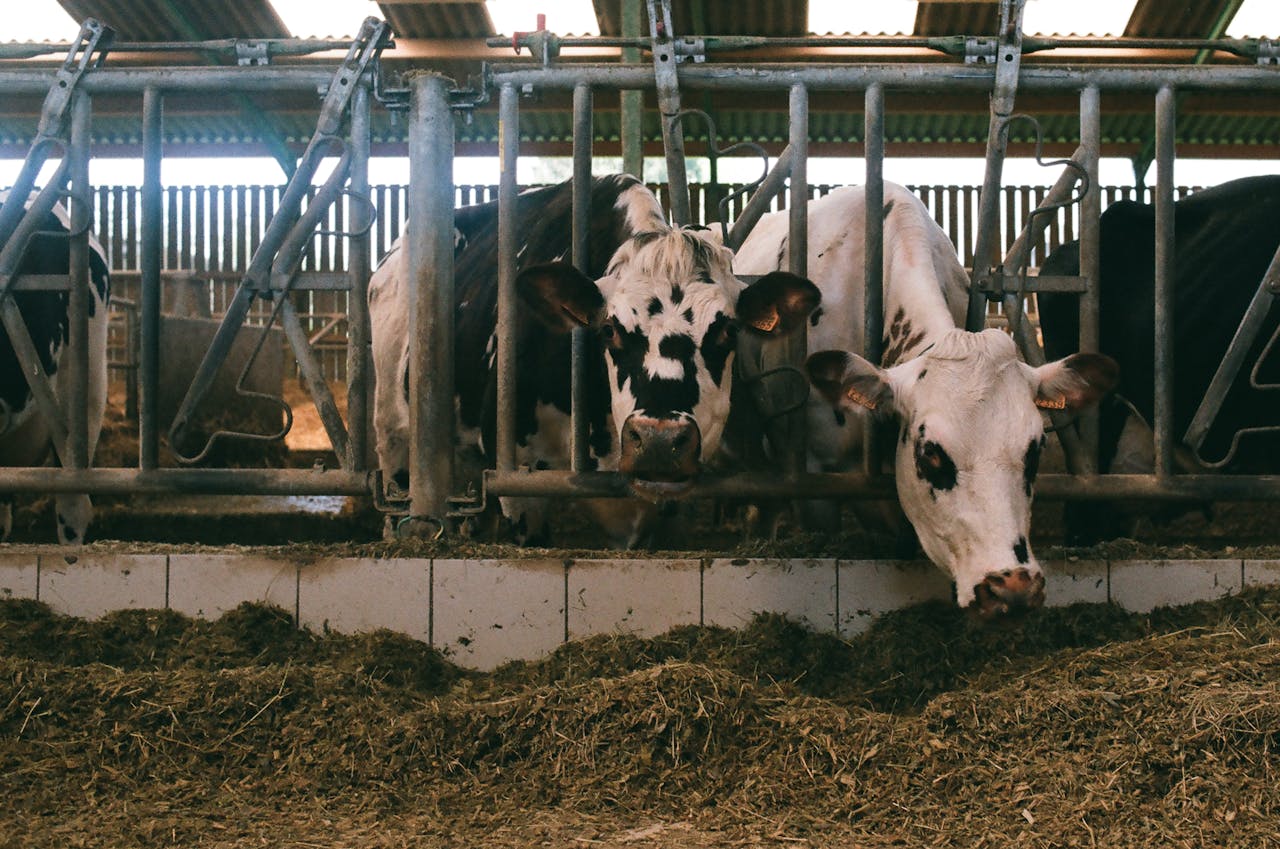A UK Government summary of the Pathogen Surveillance in Agriculture, Food, and the Environment (PATH-SAFE) programme has found that imported livestock feed is unlikely to pose antimicrobial resistance (AMR) issues. The cross-government initiative has been led by the Food Standards Agency using a One Health approach. The findings has already influenced policy and surveillance priorities.
Programme overview
The PATH-SAFE programme, a 4-year, £24 million (€27.61 million) cross-government initiative, has been led by the Food Standards Agency and involved multiple partners, using a One Heath approach. Running from 2021 to 2025, it aimed to modernise the UK’s bio-surveillance systems by using genomic sequencing and environmental sampling to detect foodborne pathogens and antimicrobial resistance (AMR) across the agri-food chain.
Industry involvement
In 2022, the Agricultural Industries Confederation (AIC) was approached by FSA, Animal and Plant Health Agency (APHA) and Veterinary Medicines Directorate (VMD) to explore the feasibility of collecting feed samples for investigation of potential transmission of antimicrobial resistance via imported feed materials.
The outcome was the collection of over 600 samples of feed materials and compound feeds (both heat-treated and non-heat treated) to establish the prevalence of Salmonella species and antimicrobial resistance in animal feed. The outcome of this analysis will form the basis of a peer-reviewed academic paper, and it has already influenced policy and surveillance priorities, summarised by the following statement:
“PATH-SAFE provided data on AMR risk from imported livestock feed, which plugged an information gap. Risk of AMR was estimated to be low, which helped inform decisions to de-prioritise animal feed as a surveillance metric for the time being.”
Key findings
More specifically, the feed project concluded that:
“Animal feed [is] unlikely to be a major or direct source of this AMR for livestock, which showed higher figures in the UK Veterinary Antimicrobial Resistance and Sales Surveillance (VARSS) reports.”
Future action
The report did however say that in many cases additional investment and action is needed to incorporate insights from the programme into surveillance approaches and inform wider approaches to cross-government collaboration and One Health surveillance.
Strengthening One Health surveillance
Evidence from this evaluation indicates several recommendations to maximise the impact of the investment in surveillance that occurred through the PATH-SAFE programme:
- Long-term investment to support further investigation, implementation and scale up: PATH-SAFE produced useful data, methods and tools, and insights about FBPs and AMR that can help inform decision making. A dedicated follow-up funding package (with clear departmental ownership and follow up actions) should be established for the most promising initiatives to generate evidence on integration within current practices and a cost benefit analysis. For instance:
- Allocate resources to continue the bulk milk surveillance system that successfully aided the avian influenza response in dairy cattle in 2024, building on the existing relationship with National Milk Laboratories
- Support the expansion of the genomic data platform for Salmonella, E. coli and Listeria that Food Standards Scotland (FSS) and the UK Health Security Agency (UKHAS) have already committed to trial alongside existing surveillance activities
- Fund further development of wastewater surveillance applications for foodborne pathogens (FBPs), particularly the analysis of wastewater samples routinely collected through UKHSA’s polio surveillance programme
- Develop a cross-government surveillance knowledge repository: To help disseminate the knowledge and insights that PATH-SAFE generated, PATH-SAFE management and the core partners involved in PATH-SAFE should:
- Develop a dedicated repository of PATH-SAFE methods, findings, and operational insights, making it accessible to all surveillance stakeholders
- Develop sector-specific guides on surveillance implementation for animal health, food safety, and environmental sectors based on PATH-SAFE’s cross-domain experience and insights generated. This should extend to utilisation of given methods and tools used in the programme
- Convene a policy roundtable targeting Cabinet Office, UKHSA, DHSC, Defra leadership and initiatives, alongside the four nation equivalents. This should serve to develop a strategic roadmap of surveillance design and utilisation across the One Health agenda.
- Continued monitoring: The current evaluation is limited in that it cannot assess outcomes and impacts after March 2025, prior to many PATH-SAFE outputs being available. An independent follow-up evaluation should be commissioned in 2027 to
- Track long-term adoption: For example, assess how PATH-SAFE methods or the use of genomic data platform have been integrated into business-as-usual practices
- Measure sustained relationships: Evaluate whether and how the collaboration networks established between agencies like FSA, UKHSA, Defra, APHA, and industry partners have endured beyond the programme
- Determine whether surveillance improvements have contributed to faster outbreak detection or response, as seen in the successful application of bulk milk testing for avian influenza
Guiding Future Surveillance Efforts
In addition, the following recommendations focus on future One Health surveillance initiatives in the UK:
- One of the key successes of the PATH-SAFE programme was the ability to coordinate between different projects and build relationships across surveillance partners. This was facilitated by a strong central management team, shared ring-fenced funding, and shared meetings and targeted events that helped create a shared awareness and sense of purpose around the programme. These supporting factors should be incorporated into future surveillance initiatives and the wider approach to One Health surveillance in the UK.
- Data sharing issues are common across surveillance programmes and in cross-government initiatives. While PATH-SAFE achieved some of its data-sharing goals within the context of the programme, there were challenges that limited the ability to create cross-programme data sharing agreements, which meant that the programme struggled to make meaningful improvements to how data is shared more broadly across biosurveillance projects. Addressing issues related to inconsistent interpretation of guidelines and regulations around data protection, the extent and type of meta data that is collected and shared, linking datasets across sectors and anonymisation at a higher level within the UK can help improve the efficiency of future initiatives, and avoid this issue needing to be addressed by each government department in isolation and through bi-lateral agreements.
- Prioritisation of projects that can help improve surveillance in the UK should be conducted according to clear and transparent criteria and in line with departmental and wider government priorities around surveillance. For example, this might include the ability of specific surveillance methods or studies to inform decision making about prevention or mitigation, the cost-effectiveness of surveillance approaches, and ability to integrate methods to existing surveillance programmes. This helps ensure that spending and departmental action is coordinated, and that outputs from separate projects complement one another to improve surveillance outcomes in the UK.
- Based on experiences from the PATH-SAFE programme, future surveillance programmes should incorporate:
- An initial funding for pilot phase with clear milestones and continuation criteria.
- Contingent implementation funding (funding tranche specifically for implementation of successful pilots, conditional on meeting specific performance criteria); and
- Required sustainability planning detailing how methods will be incorporated into business-as-usual operations
These actions, if taken, could help achieve longer term benefits from PATH-SAFE and wider surveillance initiatives.
The full report can be read at the UK government’s website here.


